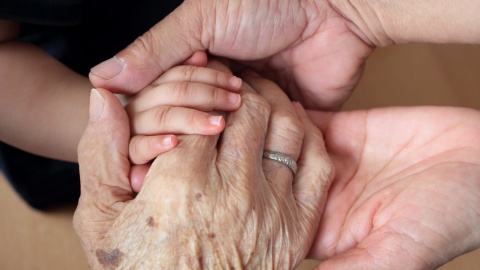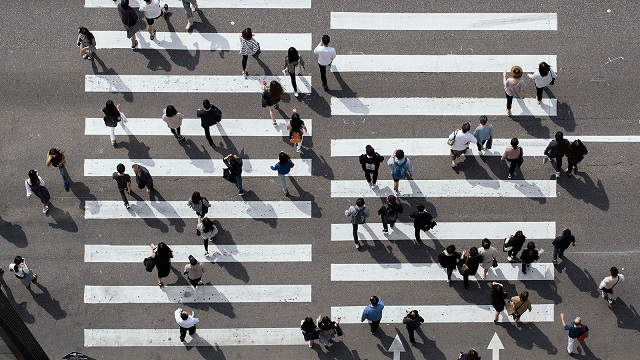
When we hear the term demographic change, many of us think of aging societies, pension systems under threat, and an overpopulated planet. Yet visionaries in science and business are working day in, day out, to tackle those very challenges. Whether in the field of medical care, mobility or power supply – many challenges facing society can now be solved efficiently with the aid of digitalization and connectivity.

What does demographic change mean?
Demographic change often has a negative connotation, despite being a neutral term. The German Federal Agency for Civic Education defines it as follows: “It denotes current trends and changes in population development, in particular with regard to the age structure, birth and mortality rates, ratios of nationals, aliens and naturalized persons, and the numbers of immigrants and emigrants.”

What concrete challenges are there?
Aging population
In western societies and Japan, demographic change means an excessive burden is placed on social security systems. The World Economic Forum has calculated that the average savings of citizens in many countries will be used up a decade before the end of their life. Women in Japan have the biggest deficit: They will outlive their savings by around 20 years. Longer life expectancy and falling birth rates contribute to an aging population in industrialized nations.
Overpopulation
In the medium variant of its forecast, the United Nations assumes that the Earth will have a population of 9.7 billion in 2050 – the figure for 1970 was just around 3.7 billion. All people need access to clean water and adequate healthcare, and to have enough to eat. The UN reports that around 820 million people do not have access to sufficient food today. A further problem: According to the UN, 500 million people have to contend with dwindling soil fertility in the areas they live as a result of climate change. Rapid population growth means existing concepts for infrastructure, industry and communication are increasingly running up against their limitations.

Despite population growth: What positive trends are there?
Many projects in research and business keep on coming up with surprising answers to the challenges of demographic change with new and innovative methods.
More education and sex education ensure that birth rates fall, for example. There was an unusual approach in Brazil, where the TV producer Globo portrayed families with no children or just one child as normal in its telenovelas. The result: The birth rate fell in regions where the shows were a big hit.
At the same time, the often pessimistic tone of the debate is changing very generally. A few years ago, “Factfulness”, a worldwide bestseller by the Swedish scientist Hans Rosling, who died in 2017, reached an audience of millions of people. Its core message: Despite an ever-growing population, by far the most indicators point to positive global trends – for example, the percentage of undernourished people worldwide fell from 28% in 1970 to 8.9 % in 2019.
Private sector enterprises are also launching more and more initiatives aimed at incorporating data from futurology into everyday business. One example is Infineon’s global network of HR diversity managers, who work to ensure that HR management reflects society’s changing demographics. More than 40,000 employees from over 100 nationalities, of different ages and with diverse backgrounds and lifestyles help develop, produce and market sustainable technology solutions – solutions that make life easier, safer and greener.

E-health: How big data and the IoT deliver better healthcare
The terms “big data” and “Internet of Things” (IoT) harbor many new opportunities to solve social challenges. Collecting and processing data enables concrete insights into people’s individual needs. That can be used to create perfectly tailored solutions.
One practical example is wearables, such as smart watches, that help aging patients in their everyday life. They continuously measure their pulse and blood pressure, can pass on the data to the physician treating them, and can notify relatives or call an emergency number if needs be. Predictive methods based on artificial intelligence improve a physician’s ability to diagnose illnesses, help prevent them or allow them to be detected at an early stage.
A connected home helps the elderly in their everyday life
Many everyday chores can be accomplished by the elderly in a smart home without barriers or physical effort. Service robots, for example, do the vacuuming or bring meals to the table. The lights, heating and shutters are controlled by simple voice commands. Seniors can access their own four walls by means of their fingerprint or face recognition – eliminating the need for a key that might get lost. Carers or relatives can therefore be let in upon request or in an emergency.
One thing is a must with all these technologies: cybersecurity. Not least, reliable data security and protection is required so that sensitive personal health data is kept safe.

Mobility and energy needs: more people, more traffic, more CO2?
Growing and aging societies also need new forms of mobility. More and more people in an ever-aging population want to get from A to B quickly and safely, especially in cities. One solution to that is autonomous driving. Self-driving cars will help avoid traffic jams and accidents and improve mobility in old age. Numerous fleets are already piloting autonomous driving in the U.S. Customers of Alphabet’s subsidiary Waymo in Phoenix, Arizona, can already sit back and take a ride in completely autonomous vehicles, for instance.

Nevertheless, more people inevitably means more traffic and a greater need for energy. And if the cars run on diesel or gasoline, the direct result is higher and higher emissions of CO2 that harm the climate. Switching to alternative drives to protect people and the environment is unavoidable. If alternatives like electromobility are to be truly carbon-neutral, the electricity cannot be generated from fossil fuels. It is imperative to move to renewable sources like the wind or sun.
Microelectronics makes a crucial contribution when it comes to generating power, but also in storing, transmitting and using it. It is indispensable if we want to supply a growing and changing population with energy efficiently and sustainably.
Last update: July 2021





